White balancing for more beauty [PART III]
By: Thorsten Overgaard. March 2015. Upated May 29, 2019.
Add to Flipboard Magazine.
Sekonic C-700 SpectroMaster Color Meter
Sekonic C-800 SpectroMaster Color Meter
Kenko KCM-3100 Color Meter
Konica Minolta IIIF Color Meter
Lumo Power Light Meter/Color Meter
WhiBal white balance card
I work a lot with getting colors right. My ideal is natural colors of skin tones and everything else. Once i get the right colors, I may decide to tweak them to warmer or colder, and I even have plugins for Lightroom to emulate famous painters color palette. This article is a work in progress on tools for the right colors.
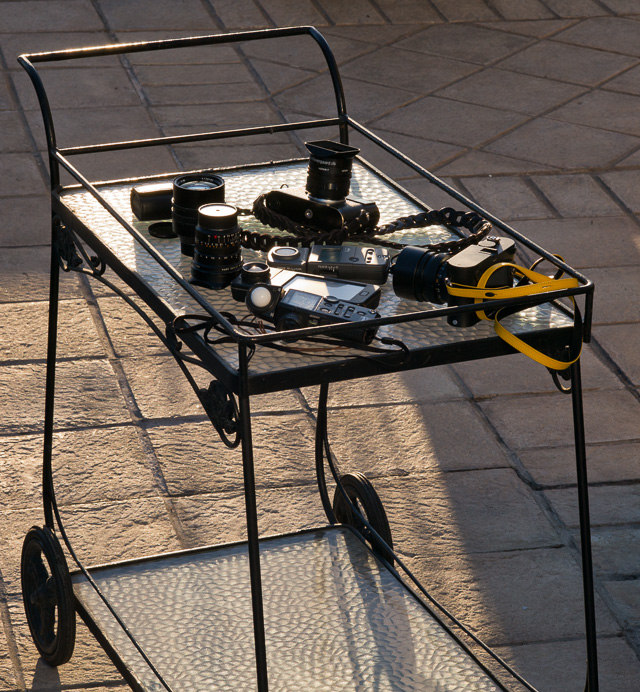
Playing around with color meters in Hollywood in August-September 2015. © 2015-2017 Thorsten Overgaard.
The Sekonic C-700 SpectroMaster came out in March 2015 and is a color meter as advanced as they come. With an iPhone-like screen for custom setting the menu and some hard-core features it takes measuring colors to a new level.
In the context of Leica M still photography it brings a little more accurate colors - which one has to weight up against the size and price. I got one becaus ethe subject of accurate colors is one of my favorites for the time being.
For advanced photography with more than one light source, using color gels to adjust the lamps, and/or filters in front of the lens (as in a film set), it makes total sense.
One of the things you can measure with the C-700 SpectroMaster is the quality of the light source. If for example a Tungsten lamp is missign reds. This is something you can't adjust in the camera but something you may adjust in the editing of the photograph. And it may explain why you just can't hit the right colors some times.
Video toturial of how to use an external color meter
I've made this simple video showing how to set the color temperature using anexternal color meter.
External White Balance with the Sekonic C-700
If you did a manual white balance with a white piece of paper or a greycard (WhiBal®) before you photographed, the white balance is most likely as it should be, and all colors looks good.
You can also use an external Color Meter that will measure the White Balance so you can type in the correct Kelvin value. This image below gives a good idea how much of an improvement the step up will give your image:
| |
 |
|
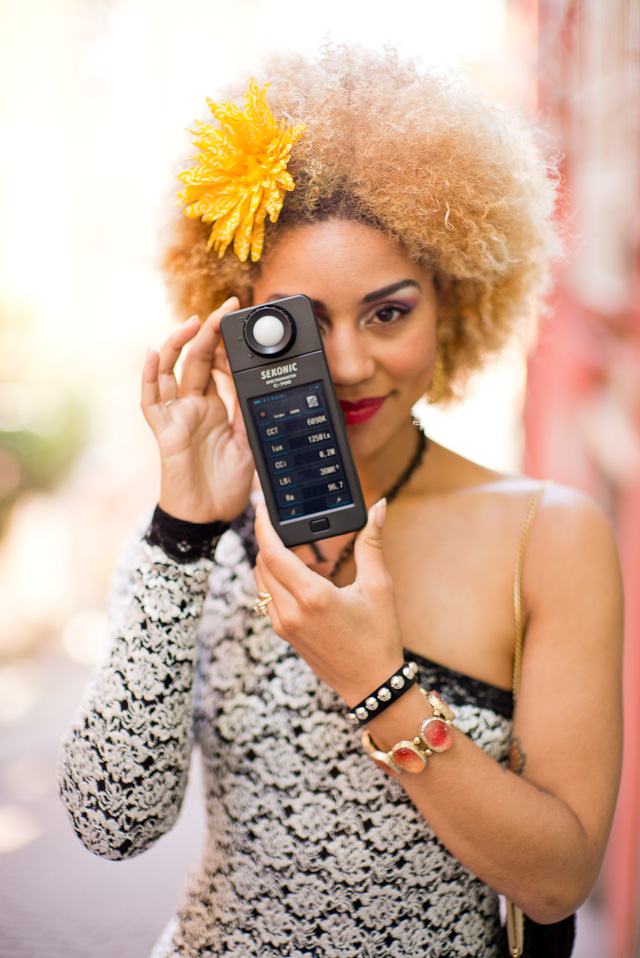 |
| Usig WhiBal |
|
Using external color meter |
 |
The image to the left was made with the White Balance set in the Leica M 240 camera by pointing it to a WhiBalcard and was 5500 Kelvin. The image to the right is measured with the Sekonic C-700 that read the light 6098 Kelvin.
I have to read the Sekonic C-700 Color Meter and do the adjustment in Lightroom (or in the camera before I take the picture). In this case I adjusted it in Lightroom.

Sekonic C-700 Color Meter ($1,400) and WhiBal white balancing card ($30, often referred to as a "whibal greycard").
For the patient perfectionist
The startup time for the Sekonic C-700 is about 15 seconds to calibrate. Then it is ready to take a reading which is 3-6 seconds.
The Sekonic C-700 touch screen of course is active when the Color Meter is on. As the startup process of the Color Meter is 15 seconds, you tend not to turn it off. So if out and about, you put it in the pocket and that is a bad idea as the touch screen is still on for any type of touch (unlike a smartphone that is sensitive to fingers only).
In a studio where you put it on a table it is not a problem. But if it it hanging in a lanyard or in a pocket on location, it's a different story.
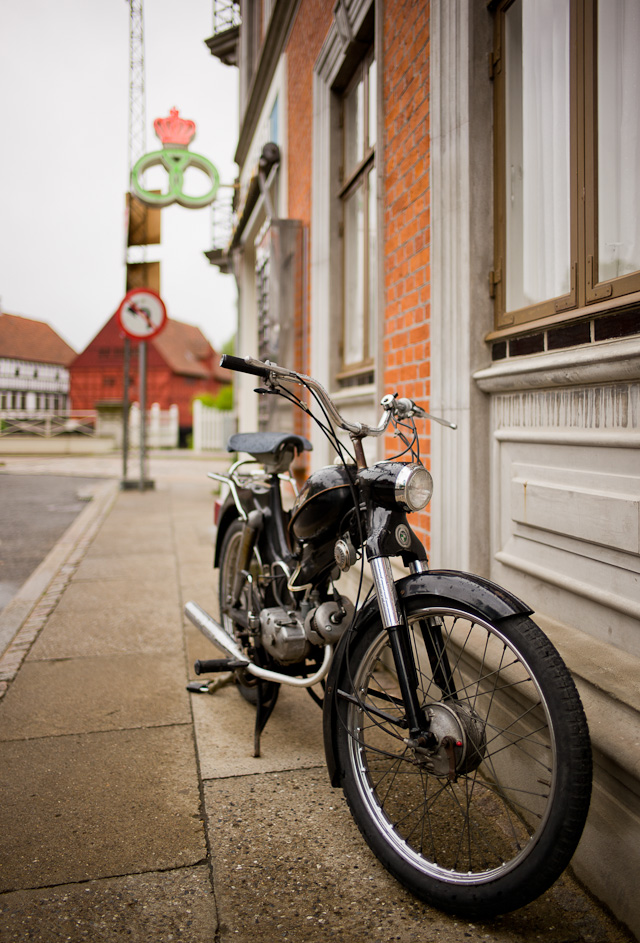
Puch motor bike from the 1970's. Leica M 240 with Leica 28mm Summilux-M ASPH f/1.4. © 2015 Thorsten Overgaard. Lightroom 2010 Process, colors with Sekonic C-700 Color Meter.
| Auto White Balance: |
|
Using WhiBal card for Manuel White Balance: |
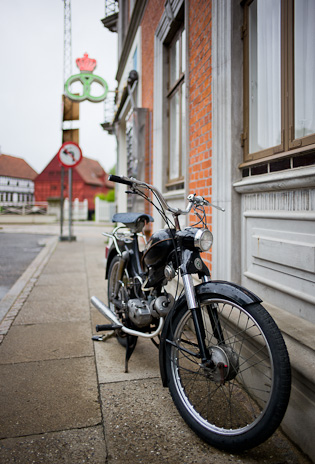 |
|
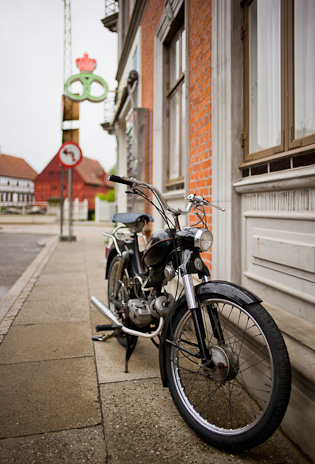 |
| |
|
|
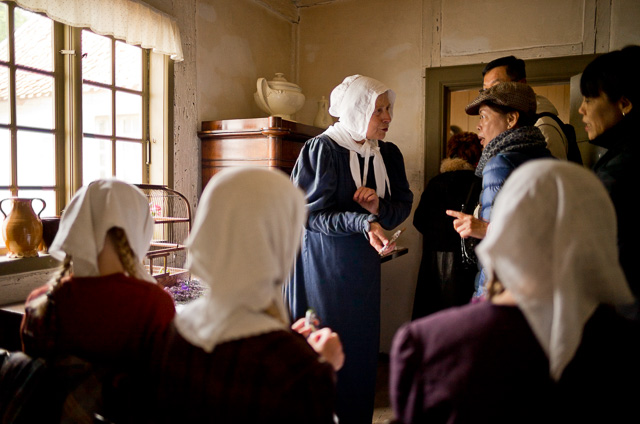
Tourists from Taipei, Taiwan visits The Old Town in Aarhus, Denmark where actors are in character as original 1984 citizens of the city. Leica M 240 with Leica 28mm Summilux-M ASPH f/1.4. © 2015 Thorsten Overgaard. Lightroom 2010 Process, colors with Sekonic C-700 Color Meter (5691 Kelvin).
| Auto White Balance (4800 K): |
|
My notes; I simply shoot the Sekonic and apply the Kelvin in Lightroom. (I read the light fromt he window and held the Sekonic so I could shoot the screen): |
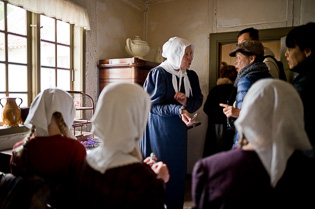 |
|
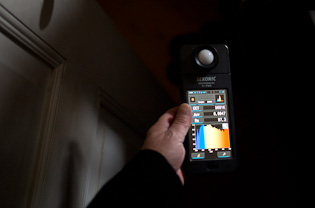 |
| |
|
|
The Sekonic C-700 is a sexy looking color meter with color touch screen. It's about $1,499 and is powered from two normal AA batteries. I mention the batteries because so many light meters and cameras require special batteries that are hard to get when you are on location and run out of battery! So normal batteries are a big plus.
This is the color meter for the patient perfectionist. The reasons why is that it takes about 14 seconds to turn on: It starts by calibrating itself, and then it is ready for a reading. This takes another 4 to 11 seconds to do, and in that period you have to keep the color meter still in the same place while it reads the light.
All in all we're talking 30 seconds to get the Kelvin temperature you need to punch into the camera.
I soon got the brilliant idea not to turn it off but simply leave it on throughout a shoot. But then I realized that the touch screen is sensitive to any touch, so whenever I digged the color meter up from the pucket, the color meter was on an antirely different screen and I had no idea if the settings had changed as well.
The Sekonic C-700 has some options for storing the readings but I haven't seen the value in learning how. Instead I will make a note on my phone or simply take a photo of the Sekonic C-700 for later reference.
The only value I in fact need from the color meter, is the Kelvin number.
The Sekonic C-700 offers a lot more, and combined with the long start-up time that probably puts it in the cagerory for film sets rather than street and portrait photogarphy.
The Sekonic C-700 analyzes the light and gives you a readout of which colors the light has, and which color neuances are missing. It's very detailed and not of much use for me.
What I gained from this color meter was an understanding of how complicated it can be to meaure and adjust colors from several light sources that are of different quality.
Which LEE filters to use on the lens
The Sekonic C-700 can also give a list of which LEE filters ou put onto the camera to correct the light. If I measure a very warm halogen lamp it will come up with a dark blue filter 80A and blue filter 80C on top of each other. That will adjust it to daylight white.
Which GEL's to use on the lamps
The other possibility, which is what you do on film sets, is to use filters on the lamps (gels). Either to balance the lamps, or to create effects. If you are filming in an office, then you set up a big daylight lamp outside the window to send in daylight to the room. Inside the room you have some lamps, and those you adjust to look like daylight, or perhaps a little warmer so they look like lamps does to the eye (but without adding too much warm light to the set).
The Sekonic C-700 gives a lot of useful information for many different people. And a lot of it is not useful to the others who also can use the color meter:
CCT = Correlated Color Temperature
Δuv = Color Shift (off of Kelvin Line)
CCi = CC Index Correction
CCCF = CC Camera Filter Correction
CCLF = CC Lighting Filter Correction
LBi = LB Index Correction (Mired)
LBCF = LB Camera Filter Correction
LBLF = LB Lighting Filter Correction
Lux = Illuminance (brightness)
fc = Foot Candles (brightness)
Here is s list of Sekonic C-700 features on the Sekonic website.
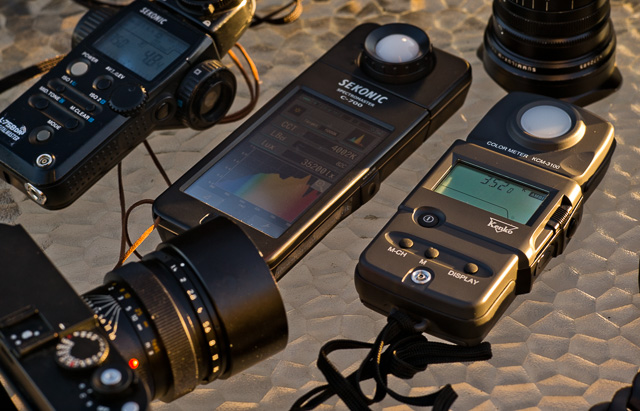
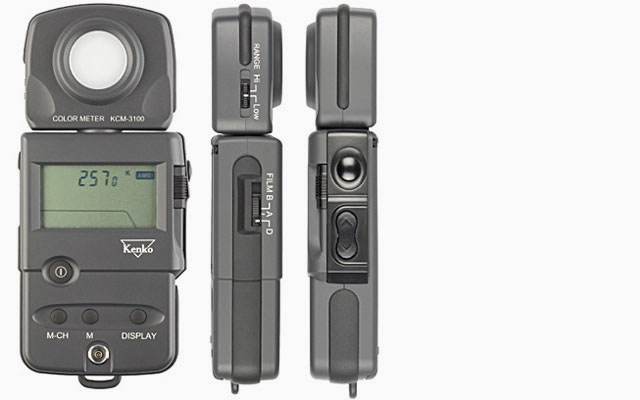
The Kenko Color Meter KCM-3100 ($799). Essentially the same as the Milonta Konica IIIF (only available secondhand now).
The Kenko Color Meter KCM-3100 (Minolta Colormeter IIIF)
The classic Minolta Colormeter IIIF was reborn in June 2015 as the Kenko Color Meter KCM-3100.
The next color meter I got was the Kenko KCM-3100 which is a $799 color meter. Kenko is basically Minolta and also make a range of lightmeters that used to me made by Minolta.
This is a very simple color meter to use if what you aim to get is simply the Kelvin number. EWhich it is for me. The start-up time is less than a second, and the reading is a second or less.
It feels very much a light meter in terms of handling and speed. It feels great with a slightly rubbery surface that gives a good grip, the weight is exactly right (not too plastic, not heavy).
Kenko have made a nice little online guide here.
The Lumo Power Color Meter for the iPhone
In May 2017 the Lumo Power color meter started shipping, a further development of the Lumo light meter. It's both a light meter and a color meter in one small unit that fits an iPhone. Pretty brilliant, actually.
Price is $299 from LUMU.
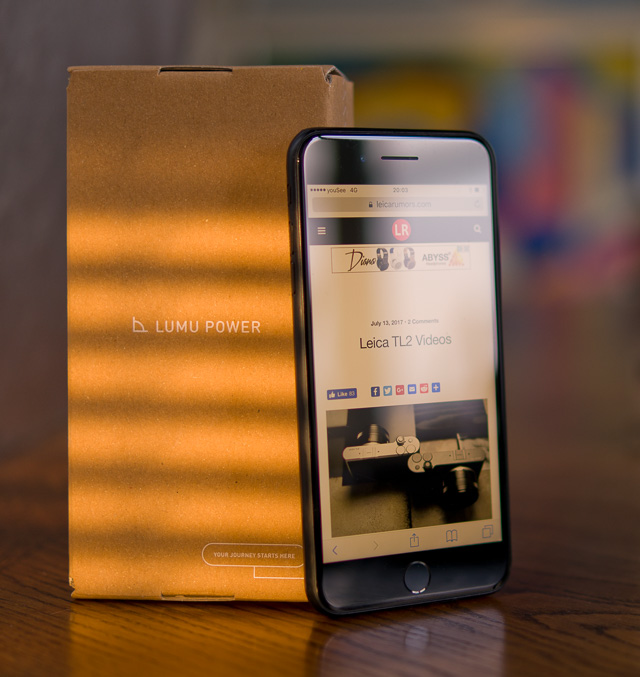
The Lumo Power color meter ships worldwide and comes in this nice box.
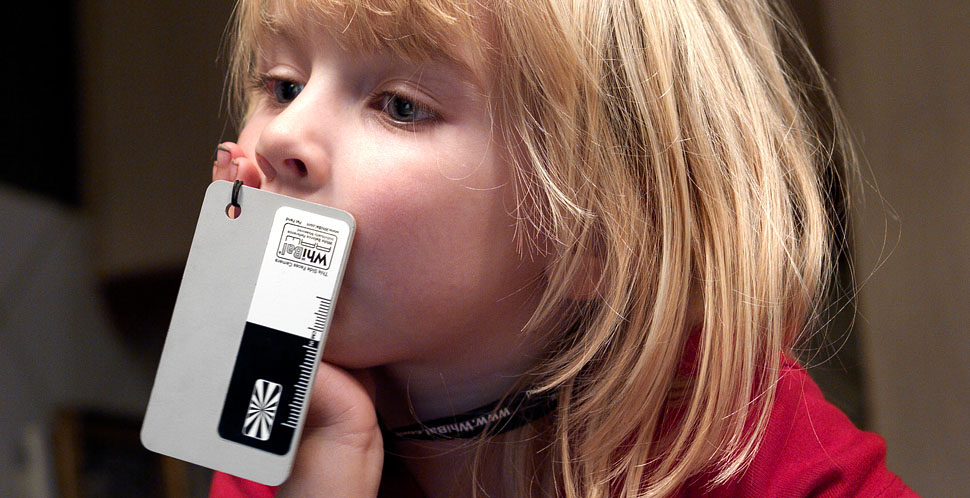
You can view a video on how to do it and read more about White Balancing in my article "White Balancing for More Beauty" to find out more about what it is and how to obtain true and pleasant colors in your photos. It's a very misunderstood subject. The WhiBal G7 PocketKit above in credit card size is a good start, and get one extra (they tend to get lost). I would recommend getting one of those, and then one of the sets where you get a Pocket Size G7 and a larger G6 for the camera bag or home. Then you have three cards.
|
![]()
